Community resources
Community resources
Community resources
Streamlining Agile Project Management with Jira: A Practical Feature Guide
Let's face it, diving into Agile and Jira can sometimes feel like deciphering an ancient script—except it’s less about finding mummies and more about managing sprints. Understanding Agile and utilizing Jira doesn't have to be as complicated as it sounds. Let's break it down to the bare essentials, making it incredibly straightforward for anyone, even if you're new to the concept of Agile.
And just in case you’re eager to dive deeper than the shallow end, be sure to explore Atlassian's Agile Project Management page. It’s packed with insights and is an excellent supplement to the essentials we’re unpacking here. Ready to strip away the complexity?
The following are the 12 Agile Principles based on the original Agile Manifesto. We'll show you how functionality in Jira aligns with and represents those principles. Let’s get started!
1. Our highest priority is to satisfy the customer through early and continuous delivery of valuable software.
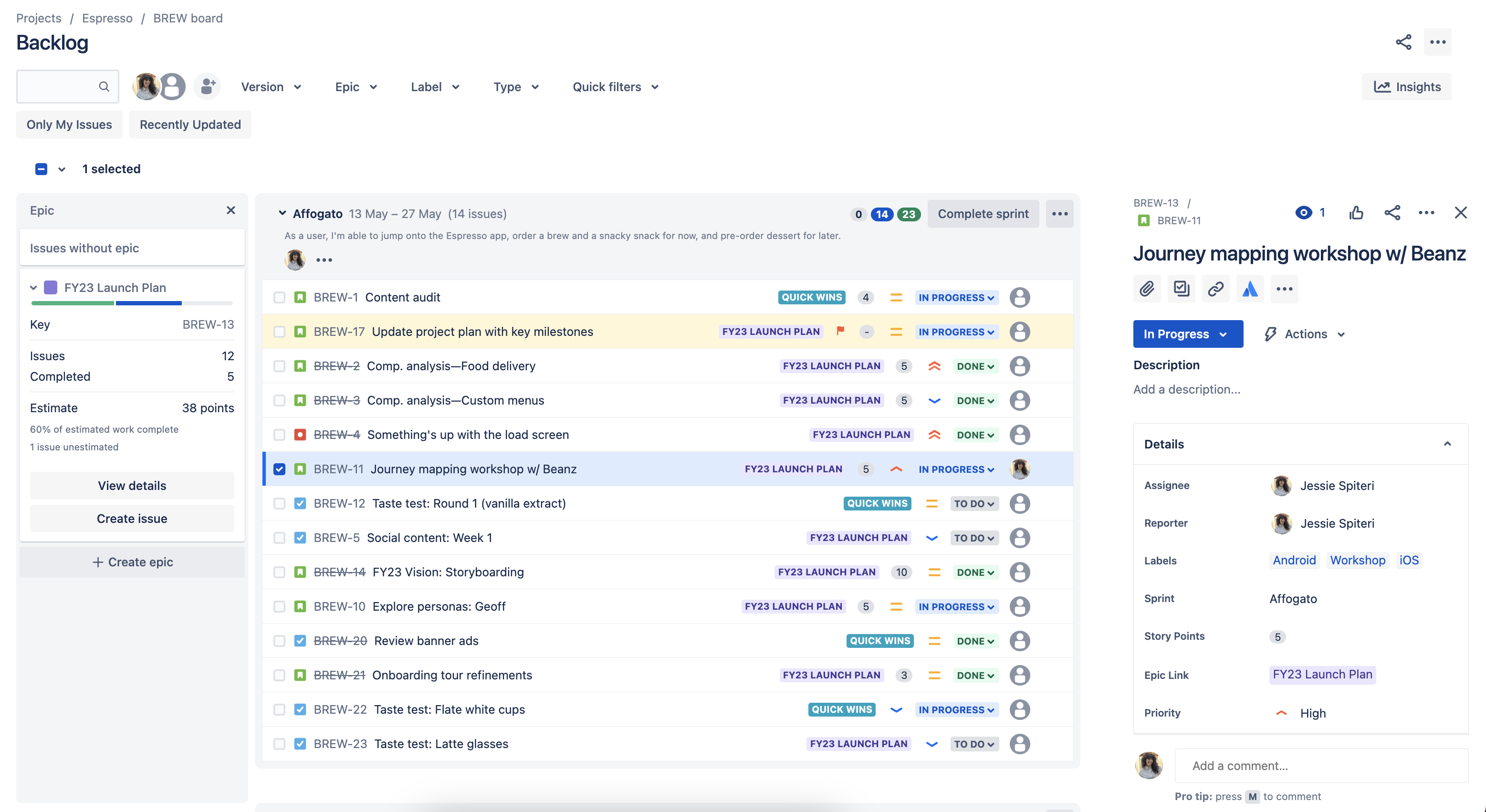
Jira’s Backlog Prioritization feature helps teams focus on delivering value to customers quickly and efficiently by allowing them to easily organize and prioritize tasks based on importance. This ensures that the most critical features are developed and released first, keeping customer satisfaction at the forefront.
2. Welcome changing requirements, even late in development. Agile processes harness change for the customer's competitive advantage.
Change isn’t just inevitable; it’s welcome. The Flexible Board Configuration in Jira enables teams to adjust their workflows and processes dynamically, accommodating changes without disrupting ongoing work. This flexibility is key to adapting to new customer needs and market conditions, turning potential disruptions into opportunities for improvement.
3. Deliver working software frequently, from a couple of weeks to a couple of months, with a preference to the shorter timescale.
Jira’s Sprint Planning tools break projects into manageable intervals, allowing for frequent reassessment and adjustments as needed. This not only facilitates the regular delivery of working software but also keeps the team aligned and focused on achieving short-term goals and deliverables.
4. Business people and developers must work together daily throughout the project.
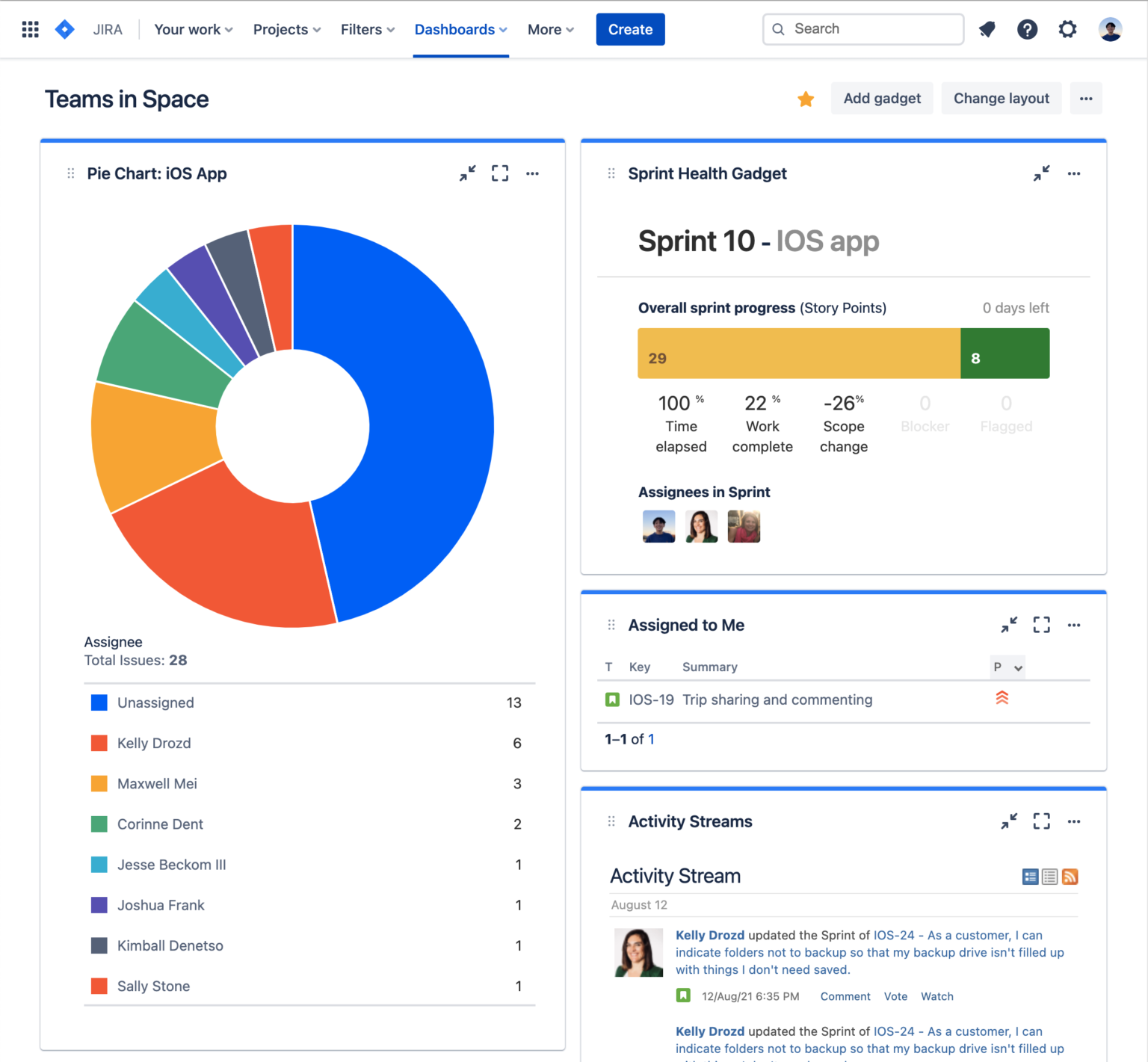
Shared Dashboards in Jira provide a common platform where both business stakeholders and developers can visualize real-time progress and updates. This transparency and continuous communication help ensure that all parties are aligned, promoting better collaboration and shared understanding of project goals.
5. Build projects around motivated individuals. Give them the environment and support they need, and trust them to get the job done.

The Team field in Jira harnesses the power of Atlassian Teams to foster collaboration and enhance project environments by organizing projects around collective units. This feature provides clear visibility of team roles and contributions, supporting the dynamic allocation and management of responsibilities, which helps in nurturing motivation and ensuring that every team member has the necessary support to succeed and contribute effectively towards common goals.
See also: Teams in Jira projects
6. The most efficient and effective method of conveying information to and within a development team is face-to-face conversation.

The Comments, @mentions, and Watching features in Jira support effective team communication. Watching an issue keeps team members notified of updates, while commenting and @mentions allow for real-time discussions, ensuring essential information is efficiently shared and transparency is maintained throughout the project.
7. Working software is the primary measure of progress.
Version Tracking in Jira enables teams to organize and oversee multiple versions of their software, providing a clear view of progress towards delivery goals. This feature helps teams focus on producing functional, high-quality software as the central indicator of progress.
8. Agile processes promote sustainable development. The sponsors, developers, and users should be able to maintain a constant pace indefinitely.
Workload Reporting tools in Jira help manage individual and team capacities, ensuring that workloads are balanced and sustainable over the long term. This helps prevent burnout and keeps productivity at optimal levels without sacrificing quality.
9. Continuous attention to technical excellence and good design enhances agility.
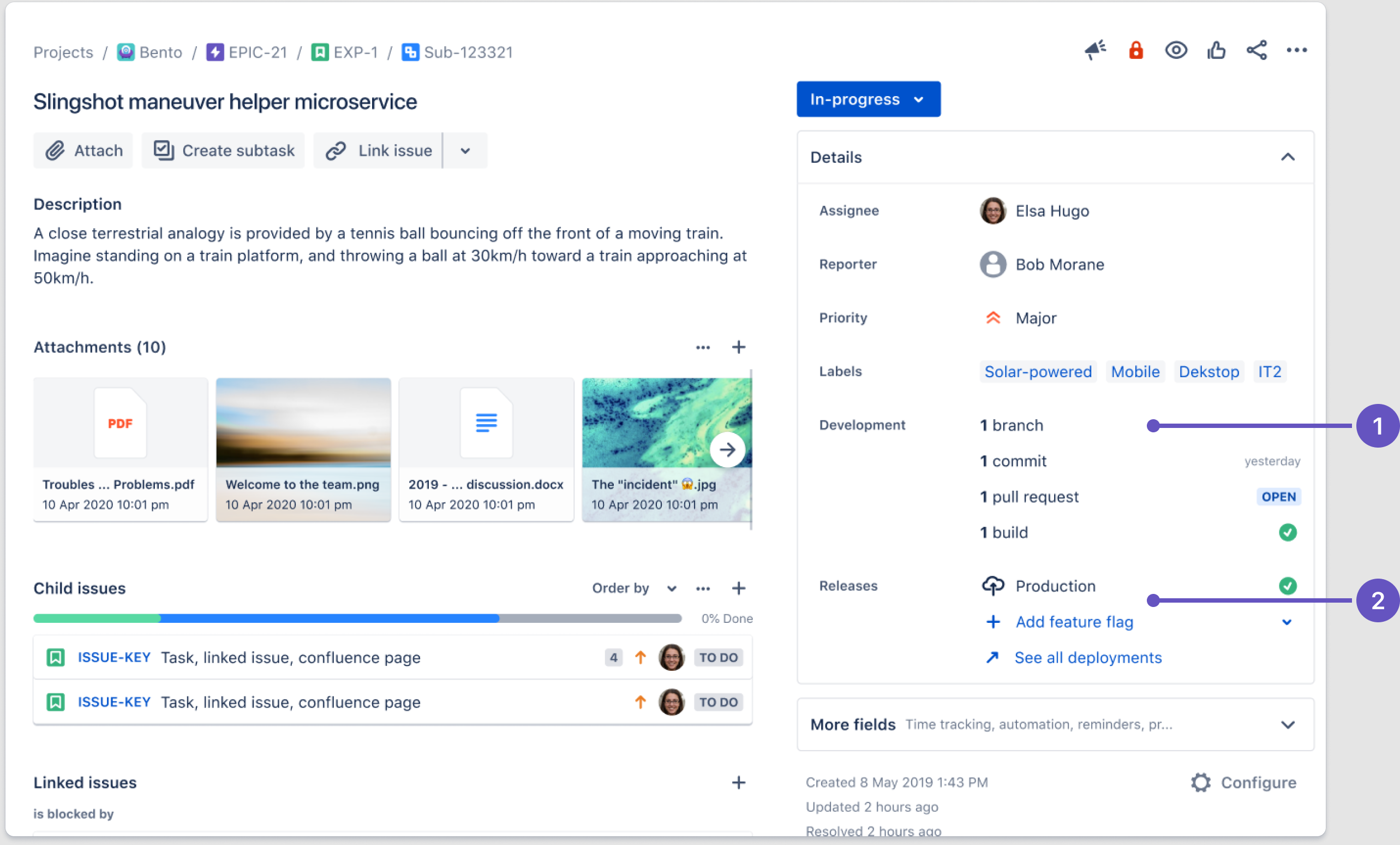
Jira supports technical excellence through its integration with Continuous Integration/Continuous Deployment (CI/CD) tools, which facilitate ongoing quality assurance and efficiency improvements. This integration ensures that teams are constantly enhancing their output, aligning with best practices in software development.
10. Simplicity—the art of maximizing the amount of work not done—is essential.
Parent linking (the artist formerly known as Epic Linking) in Jira allows teams to streamline their focus by organizing larger goals into smaller, more manageable tasks. This approach not only simplifies the workflow but also helps teams concentrate on tasks that provide the most value, reducing unnecessary work.
11. The best architectures, requirements, and designs emerge from self-organizing teams.
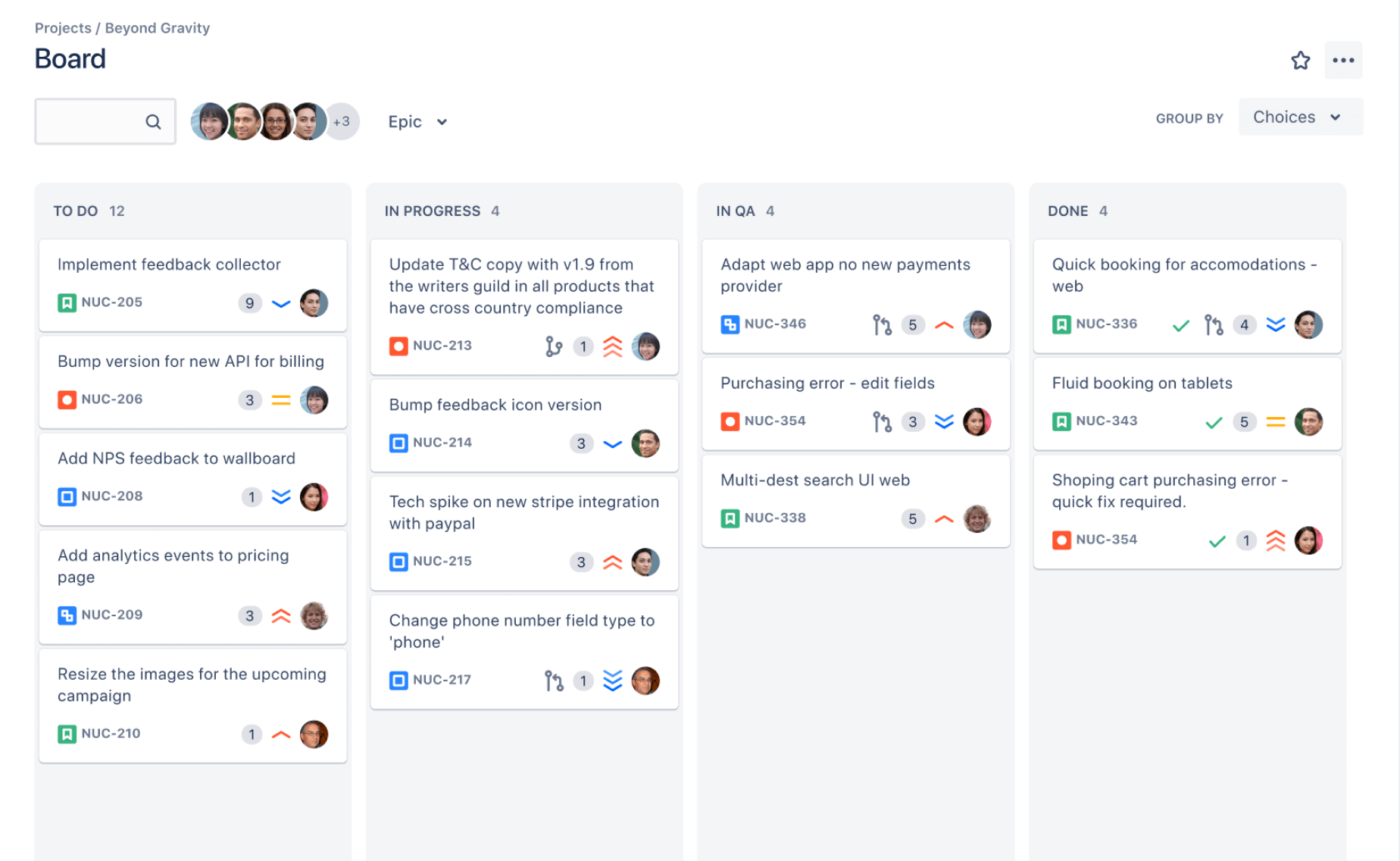
The Kanban Board in Jira empowers teams to self-manage and visualize their workflow, promoting autonomy and flexibility in task management. This tool supports self-organization by allowing team members to adjust their workflow according to evolving project needs and priorities.
12. At regular intervals, the team reflects on how to become more effective, then tunes and adjusts its behavior accordingly.
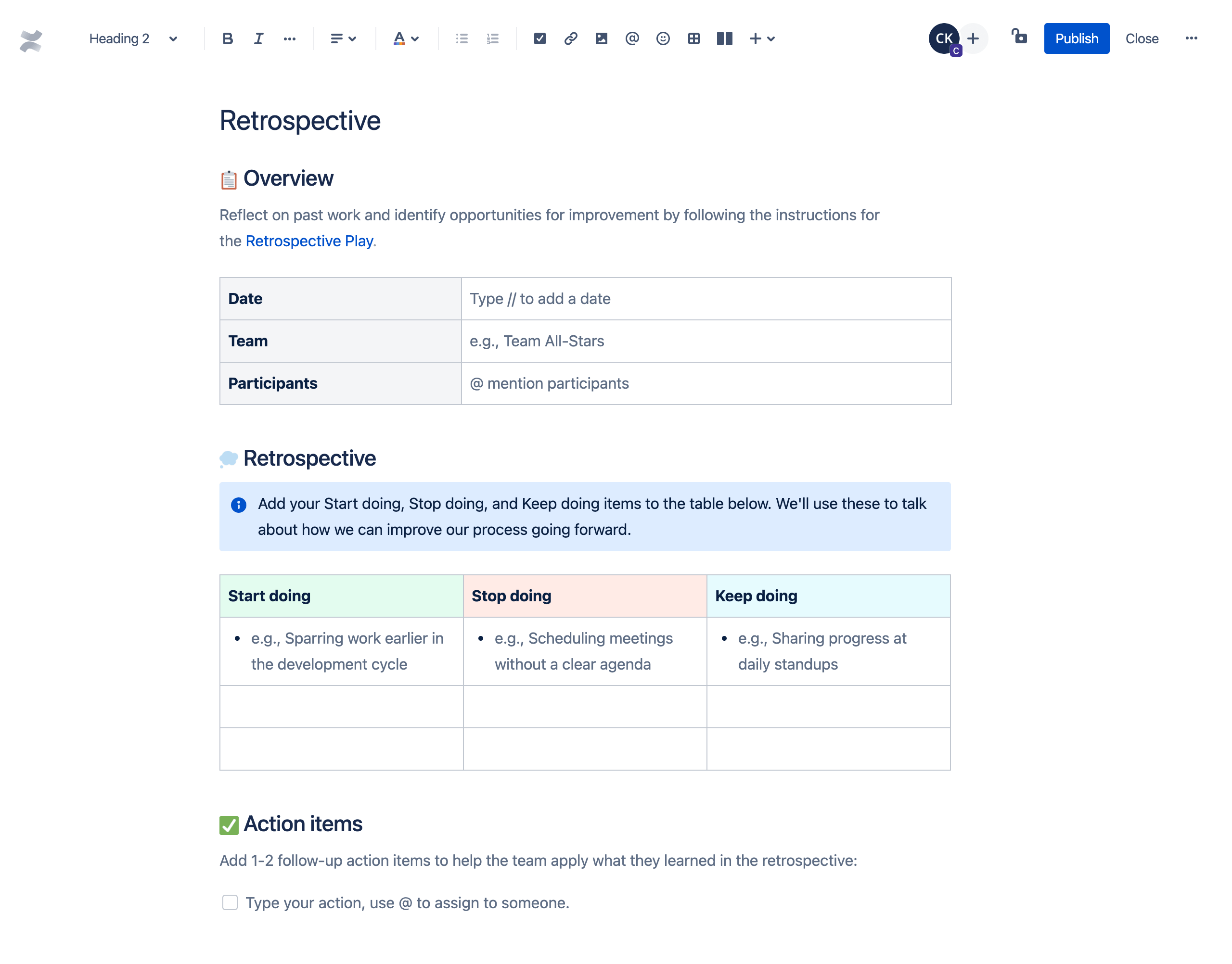
Jira’s Sprint Retrospective feature, enhanced by the ability to link Confluence pages to sprints, provides a robust framework for teams to assess and improve their performance. The linked Confluence pages serve as a centralized repository for documenting insights and strategies, enabling continuous learning and adaptation based on shared reflections and documented experiences from each sprint.
Flexibility at the Core: Agile and Jira for Dynamic Project Management
The common thread that binds Agile and Jira is flexibility. Agile methodologies offer a versatile framework that encourages adaptability and responsiveness, allowing teams to effectively respond to changing project demands. Similarly, Jira provides robust customization options, enabling teams to shape workflows and processes to best suit their specific needs. This shared emphasis on flexibility is crucial for implementing Agile principles effectively, ensuring that project management is not just about following rules but about adapting to each project’s unique challenges. Together, Agile and Jira help teams streamline complex tasks and focus on what truly matters: delivering exceptional value efficiently.
Was this helpful?
Thanks!
Josh Costella
About this author
COO at XALT | Atlassian Certified Expert Emeritus
Chandler, Arizona
52 accepted answers

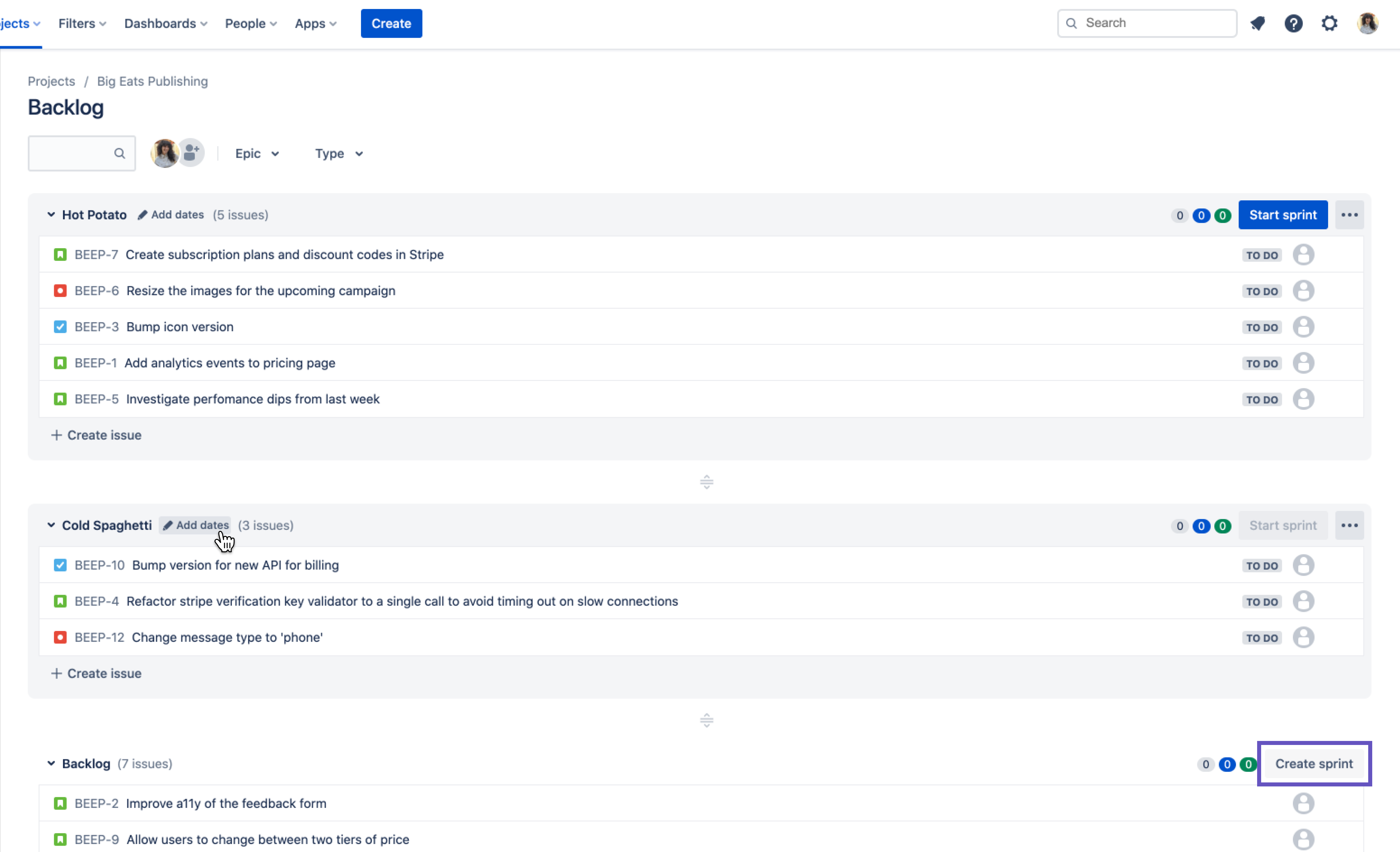



1 comment